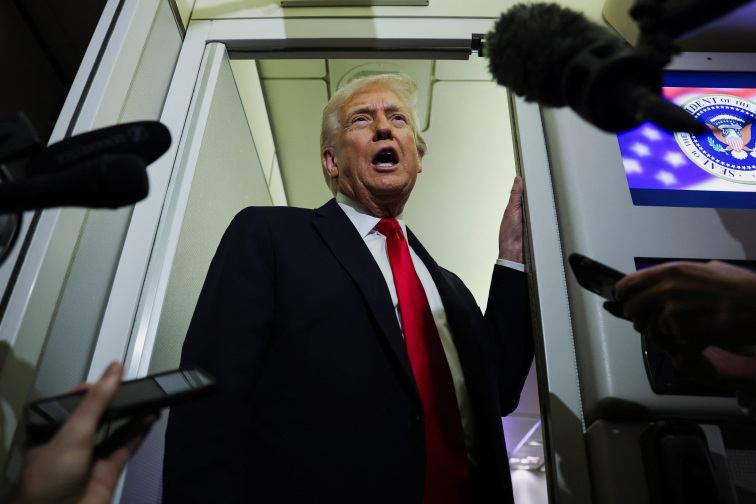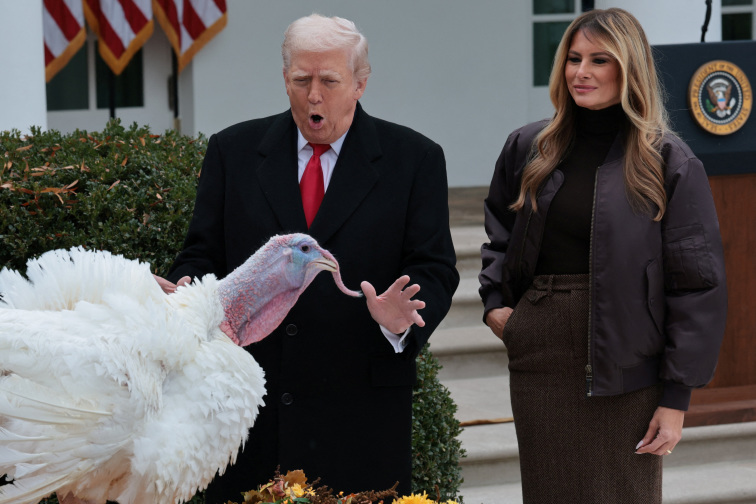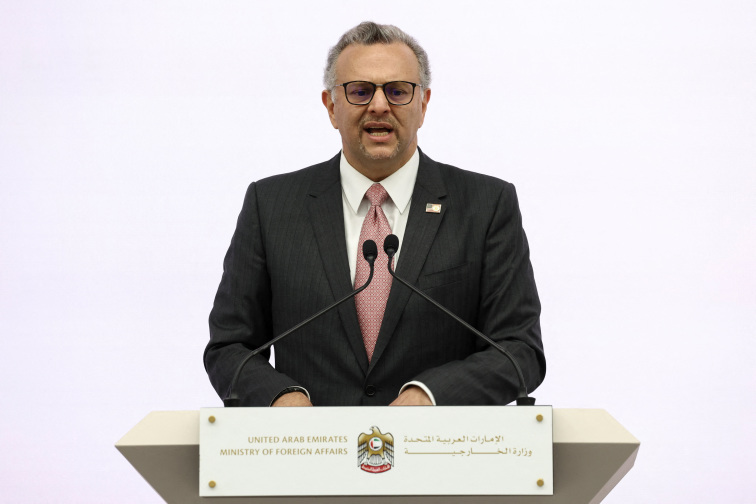Trump stares at Xi Jinping
[People News] U.S. President Donald Trump and CCP leader Xi Jinping held a one-hour phone call on November 24. This was their second conversation since meeting in Busan, South Korea, on October 30.
According to a November 25 report from Bloomberg cited by FX168 Finance, U.S. President Donald Trump said he urged Xi Jinping to speed up and expand China’s purchases of U.S. agricultural products, adding that Beijing had “more or less agreed” to do so.
Speaking to reporters aboard Air Force One on Tuesday, Trump said: “I think he (Xi Jinping) is going to surprise you on the positive side.” He added: “I told him, ‘I want you to buy a little faster, I want you to buy a little more.’ He basically agreed to that.”
During the call, Trump and Xi discussed trade issues as well as ongoing China–Japan tensions surrounding Taiwan.
Shortly afterward, Trump also spoke with Japanese Prime Minister Sanae Takaichi, informing her of his conversation with Xi and describing his discussion with Takaichi as “terrific.”
Trump said: “I think things are going very well in that part of the world.”
Key details were finalized for the ceasefire agreement Trump and Xi reached during their meeting in South Korea last month.
The U.S. and China plan to reach agreement by the end of this month on the terms of a “general license”; China had earlier promised to issue export permits for U.S.-bound rare earths and critical minerals.
Trump also wants China to accelerate its purchases of U.S. soybeans, as China has effectively boycotted U.S. soybeans this year in response to Trump’s tariff increases on Chinese goods.
Background and Practical Constraints on Agricultural Purchases
In recent months, U.S.–China agricultural trade has been the most workable “ballast stone” in bilateral economic negotiations. After the Trump administration expanded tariffs on China, Chinese soybean purchases from the U.S. slowed significantly, widely seen as a “reciprocal response” to the tariffs.
But as the trade truce reached in South Korea last month begins taking effect and China temporarily eases rare-earth export controls, agriculture is considered one of the areas most likely to recover first.
From an industry perspective, China’s demand has both seasonal and structural aspects:
• The recovery of hog farming and feed demand is pushing up rigid demand for imported soybeans and corn;
• Meanwhile, global supply remains dominated by Brazil and the U.S., leaving limited room for short-term substitution and making “faster purchases” commercially feasible.
How “Buy Faster and Buy More” Might Be Implemented
According to media reports including the Associated Press, China agreed during the Busan meeting to purchase around 25 million tons of U.S. soybeans annually over the next three years and to resume “large-scale orders” of key commodities. If China speeds up implementation after this latest call, the most direct signs may include:
• Concentrated signing of new-season soybean and corn orders, securing more forward contracts before the peak U.S. shipping season;
• Increased visibility in procurement rhythms—for example, state-owned grain companies entering the market more frequently and with larger single-order volumes;
• Broader categories of imports—beyond soybeans, U.S. sorghum, wheat, cotton, and meat imports may also recover in parallel.
However, the fulfillment of these purchases still depends on variables such as tariff execution, exchange rates, and shipping costs. Market observers also note that in the past, discrepancies between “commitment and execution” in U.S.–China agricultural purchases could still appear periodically. △











News magazine bootstrap themes!
I like this themes, fast loading and look profesional
Thank you Carlos!
You're welcome!
Please support me with give positive rating!
Yes Sure!